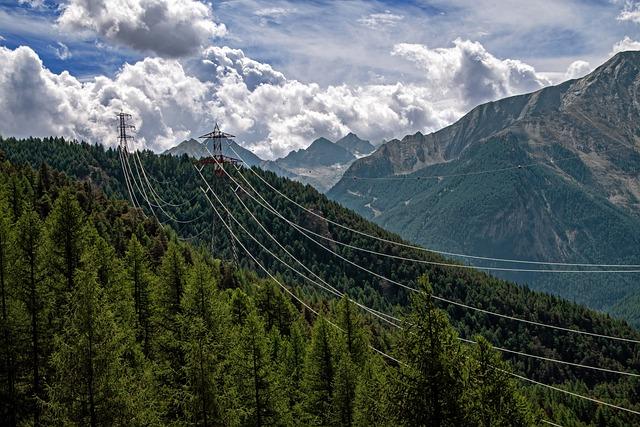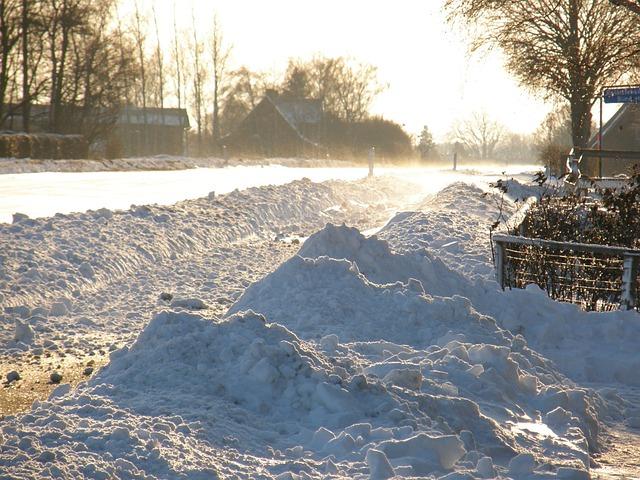Tree removal is a necessary practice in many circumstances, but it’s important to consider the environmental impact of such actions. In this article, we will explore the various environmental considerations and best practices when it comes to removing trees. From preserving biodiversity to mitigating potential harm to the ecosystem, understanding the implications of tree removal is crucial for maintaining the health of our environment.
Table of Contents
- Environmental Impact of Tree Removal
- Factors to Consider Before Removing Trees
- Best Practices for Sustainable Tree Removal
- Importance of Replanting After Tree Removal
- Professional Guidelines for Tree Removal Operations
- Q&A
- Conclusion
Environmental Impact of Tree Removal
When considering the , it is crucial to take into account the various factors that can affect the surrounding ecosystem. One of the most significant consequences of tree removal is the loss of habitat for wildlife. Trees provide shelter, food, and nesting sites for a wide variety of animals, and their removal can disrupt the delicate balance of the local ecosystem.
Additionally, trees play a crucial role in regulating the climate by absorbing carbon dioxide and releasing oxygen through the process of photosynthesis. Removing trees can contribute to an increase in greenhouse gases in the atmosphere, leading to global warming and climate change. It is essential to consider these factors and implement best practices when undertaking tree removal to minimize the environmental impact.
- Planting new trees to replace those that have been removed
- Using sustainable harvesting practices to minimize waste
- Recycling or repurposing wood from removed trees
Factors to Consider Before Removing Trees
When considering tree removal, it is important to take into account several key factors to ensure that the process is carried out in an environmentally responsible manner. By carefully considering these factors, you can help minimize the impact of tree removal on the surrounding ecosystem and promote sustainability in your area.
- Tree Species: Different tree species have different ecological roles, so it is important to consider the species of the trees being removed and their impact on the ecosystem.
- Wildlife Habitat: Trees provide essential habitat for many wildlife species, so it is important to assess the potential impact of tree removal on local wildlife populations.
- Soil Health: Trees play a crucial role in maintaining soil health, so it is important to consider how tree removal may affect soil fertility and stability.
Best Practices for Sustainable Tree Removal
Environmental Considerations
When it comes to tree removal, it is important to consider the environmental impact of this process. Trees play a crucial role in our ecosystem, providing oxygen, habitat for wildlife, and helping to reduce carbon dioxide levels. Therefore, it is essential to approach tree removal with care and consideration for the environment.
Best Practices
- Hire a Professional: To ensure that tree removal is done safely and efficiently, it is best to hire a professional arborist or tree removal company.
- Consider Tree Replanting: After removing a tree, consider replanting another tree in its place to help maintain the ecosystem balance.
- Recycle Wood: Instead of sending tree debris to the landfill, consider recycling the wood for mulch, firewood, or other purposes.
Importance of Replanting After Tree Removal
Replanting after tree removal is crucial for maintaining a healthy ecosystem and preserving the environment. When a tree is removed, it not only affects the landscape but also disrupts the habitats of various wildlife species. By replanting trees, we can help mitigate the negative impact of tree removal and promote biodiversity.
Some key reasons why replanting after tree removal is important include:
Conserving soil: Trees help prevent soil erosion and maintain soil health. Replanting trees can help protect the soil from degradation and nutrient loss.Improving air quality: Trees play a crucial role in purifying the air by absorbing carbon dioxide and releasing oxygen. Replanting trees can help combat air pollution and promote cleaner air.Providing habitat: Trees provide food and shelter for various wildlife species. Replanting trees can help restore habitats that were disrupted by tree removal.
Professional Guidelines for Tree Removal Operations
When it comes to tree removal operations, it is essential to follow professional guidelines to ensure the process is carried out safely and responsibly. Environmental considerations play a crucial role in tree removal, as trees provide important benefits to the ecosystem. By following best practices, tree removal can be done in a way that minimizes negative impacts on the environment.
Some important guidelines to keep in mind during tree removal operations include:
- Assessment of the Tree: Before removing a tree, it is important to assess its health and stability to determine the best course of action.
- Proper Equipment: Using the right tools and equipment is essential to ensure the tree removal process is done safely and efficiently.
- Disposal of Debris: Properly disposing of tree debris is important to prevent environmental pollution and maintain the cleanliness of the site.
Q&A
Q: Why is it important to consider environmental factors when removing trees?
A: Considering environmental factors helps to minimize the impact on ecosystems, wildlife habitats, and air quality.
Q: What are some best practices for tree removal to minimize environmental impact?
A: Best practices include hiring professional arborists, using proper equipment, and planting replacement trees.
Q: What are some potential environmental consequences of improper tree removal?
A: Improper tree removal can lead to soil erosion, loss of wildlife habitats, and decreased air quality.
Q: How can tree removal be done in a sustainable manner?
A: Sustainable tree removal involves replanting trees, recycling wood debris, and preserving remaining vegetation.
Q: What role does government regulation play in tree removal practices?
A: Government regulations help to ensure that tree removal is done in a responsible and sustainable manner, protecting the environment and public safety.
Conclusion
In conclusion, it is important to carefully consider the environmental impacts of tree removal and to follow best practices to minimize negative effects. By working with trained professionals, using proper equipment, and reevaluating the need for removal, we can help preserve our natural landscape and ensure the health and safety of our communities. Thank you for taking the time to learn more about tree removal and its environmental considerations.
Simpsons Tree Services, Servicing Melbourne’s North Eastern Suburbs
Book a quote online at www.simpsonstrees.com.au




